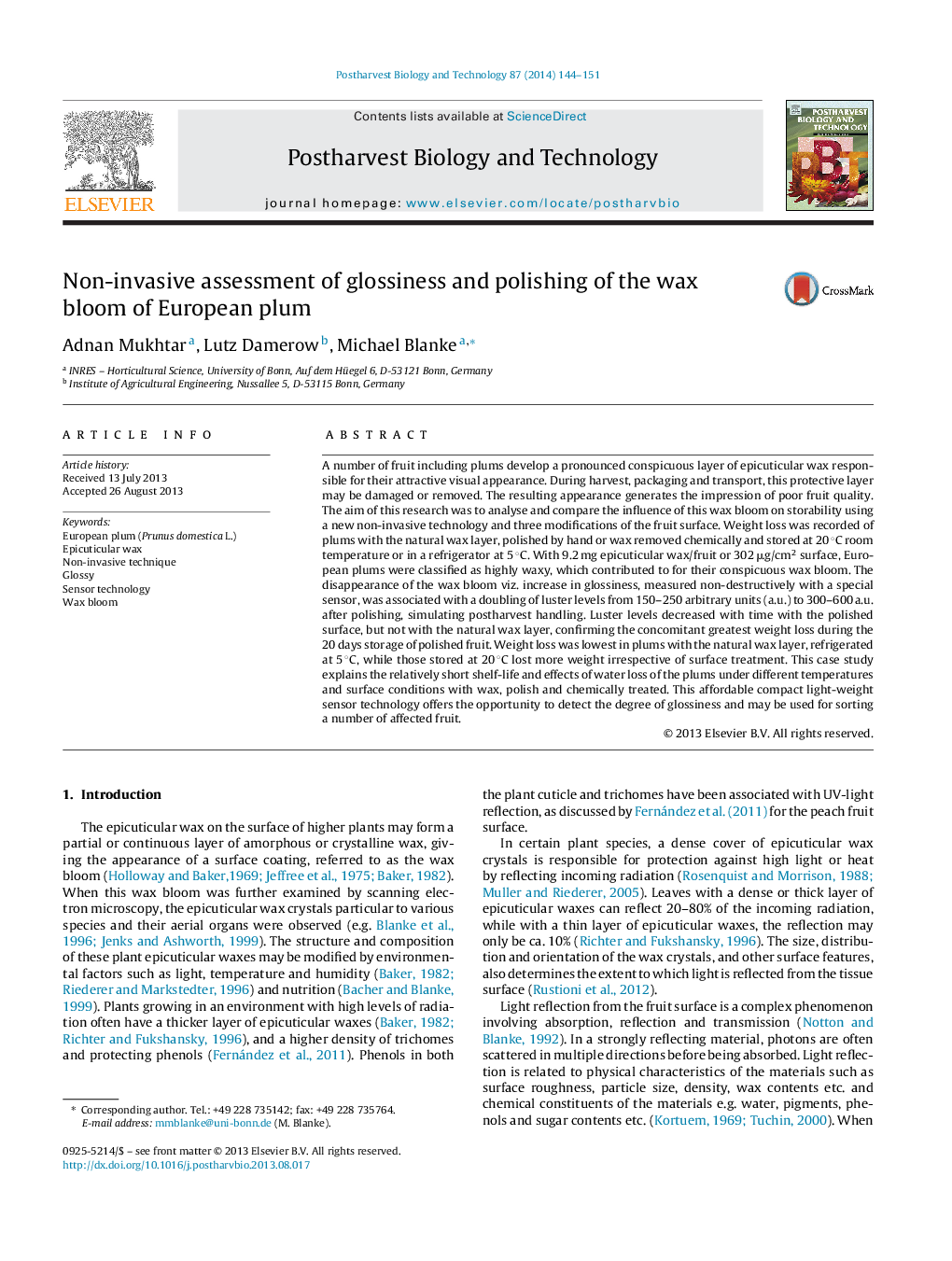| کد مقاله | کد نشریه | سال انتشار | مقاله انگلیسی | نسخه تمام متن |
|---|---|---|---|---|
| 4518341 | 1625007 | 2014 | 8 صفحه PDF | دانلود رایگان |
• Postharvest handling adversely affects wax bloom of blue plums, blueberry, and red grape.
• Wax bloom on European plum was associated with large epic. wax content: ca. 300 μg/cm2 and was removed by polishing or chemicals.
• A new luster sensor was used for non-invasive real-time measurement of wax bloom.
• Luster levels using the new sensor doubled after wax removal by polishing or chemicals.
• Weight loss over time was lowest with natural wax at 5 °C, greatest after wax removal at 20 °C.
A number of fruit including plums develop a pronounced conspicuous layer of epicuticular wax responsible for their attractive visual appearance. During harvest, packaging and transport, this protective layer may be damaged or removed. The resulting appearance generates the impression of poor fruit quality. The aim of this research was to analyse and compare the influence of this wax bloom on storability using a new non-invasive technology and three modifications of the fruit surface. Weight loss was recorded of plums with the natural wax layer, polished by hand or wax removed chemically and stored at 20 °C room temperature or in a refrigerator at 5 °C. With 9.2 mg epicuticular wax/fruit or 302 μg/cm2 surface, European plums were classified as highly waxy, which contributed to for their conspicuous wax bloom. The disappearance of the wax bloom viz. increase in glossiness, measured non-destructively with a special sensor, was associated with a doubling of luster levels from 150–250 arbitrary units (a.u.) to 300–600 a.u. after polishing, simulating postharvest handling. Luster levels decreased with time with the polished surface, but not with the natural wax layer, confirming the concomitant greatest weight loss during the 20 days storage of polished fruit. Weight loss was lowest in plums with the natural wax layer, refrigerated at 5 °C, while those stored at 20 °C lost more weight irrespective of surface treatment. This case study explains the relatively short shelf-life and effects of water loss of the plums under different temperatures and surface conditions with wax, polish and chemically treated. This affordable compact light-weight sensor technology offers the opportunity to detect the degree of glossiness and may be used for sorting a number of affected fruit.
Figure optionsDownload as PowerPoint slide
Journal: Postharvest Biology and Technology - Volume 87, January 2014, Pages 144–151
